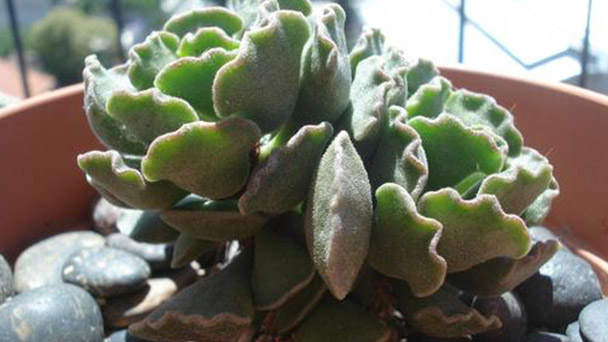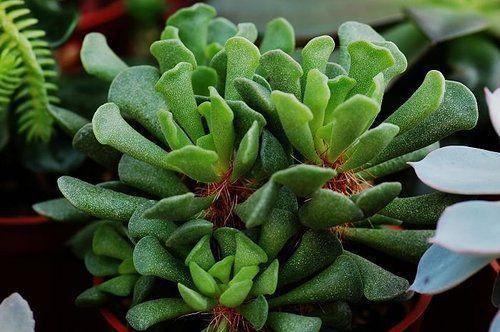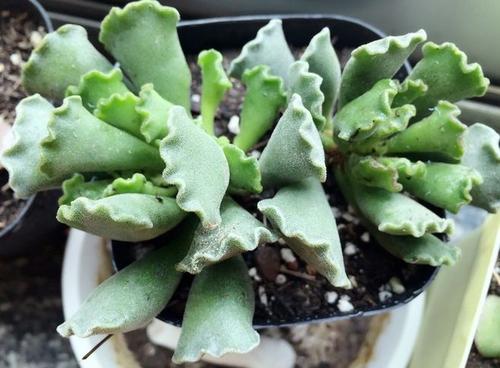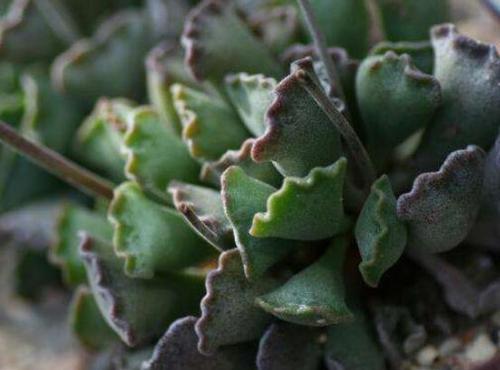How to grow Adromischus poellnitzianus
Written by Maggie
Jan 20 2021

Adromischus Poellnitzianus, a succulent plant, has a strange growth, with leaves that tend to have uneven edges and twisted corrugations. Adromischus Poellnitzianus is simple to raise and easy to keep alive at home. It also looks fun.Do you know how to raise Adromischus Poellnitzianus?Just choose the right soil, the right amount of light and a little water every day, it will grow very well.

Cultivation method of Adromischus Poellnitzianus
Adromischus Poellnitzianus is a succulent plant that can be grown at home, both on a windowsill and on a desk.Even farming is simple: choose a pot of good soil, two hours of light a day and water to produce a succulent, beautiful adromischus Poellnitzianus.
1. Sparse soil
Adromischus Poellnitzianus, like other succulent plants, prefers a more porous, looser soil. Use sandy soil for breeding purposes. If you want to nourish it better, you can mix it with rotten leaf soil and coarse sand to increase nutrition. The top of the soil is covered with pearl or vermiculite, which is also very conducive to growth.
2. Proper amount of light
It is also important to know how Adromischus Poellnitzianus is raised. It must not be exposed to the sun. It can only grow in a semi-shade environment, or under indoor astigmatism. Moving to the sun for 2 hours a day can make it grow better.
3. Water properly
Adromischus Poellnitzianus requires only a little water to survive. It grows slightly faster in spring, slower in summer and autumn, and stops growing in winter if it gets too cold. Too much watering can rot roots and waterflood Adromischus Poellnitzianus. During the growing period, it only needs to be watered once every 10 days, and the soil can be watered thoroughly every time. Water should be watered less in winter.

Precautions for Cultivation of Adromischus Poellnitzianus
1. Moderate temperature
The ideal ambient temperature of Adromischus Poellnitzianus is between 15 ℃ and 25℃. Too hot and too cold will make them grow badly. If the temperature is above 35℃ in summer, an appropriate amount of cooling should be done; If the temperature is above 7℃ in winter, an appropriate amount of warming should be done.
2, fertilization
Adromischus Poellnitzianus was mostly fertilized during the growing period. In spring, fertilizer was applied frequently, once every 20 days. Homemade bone meal or grass ash was good nourishment. But pay attention to it in summer, autumn fertilizer should be reduced, once a month at most, and no fertilizer in the winter dormant period.

Latest Updated
- Benefits of Bugleweed - 7 Science-backed Health Benefits
- Bugleweed Dangers & Side Effects - Is It Poisonous?
- How to Plant Evergreen Trees - What You Should Know
- When to Plant Evergreens - Grow Guide for Evergreen Trees
- 12 Wonderful Evergreen Shrubs for Your Garden
- 12 Popular Evergreen Plants with Pictures for Beginners
- When And How To Prune A Lilac Bush Like a Pro
- How to Grow & Care for Lilac Vine (Hardenbergia Violacea)
- Japanese Lilac Tree (Syringa Reticulata) Care & Propagation Guide
- Shumard Oak Pros and Cons - What to Know
Popular Articles
- Winter maintenance of Antirrhinum Majus
- How to Grow Terminalia Mantaly Tree
- How to Grow and Care for Crossostephium Chinense
- How to grow Antirrhinum Majus in spring
- Peristeria Elata (Dove Orchid) Profile: Info & Care Guide
- Underwatered Snake Plant (Sansevieria Trifasciata) - Signs And How To Fix
- How to Care for Brazilian Jasmine Plant (Mandevilla Sanderi)
- How to Grow & Care for Graptopetalum Purple Delight in Summer
- Rosa Chinensis (China Rose): Plant Growing & Care Tips
- How to Care for Baby Sun Rose (Aptenia Cordifolia)